Niall O’Dowd follows Bill Flynn’s journey from seminary student to the upper echelons of corporate America.
℘℘℘
After leaving the seminary, like most bright Catholic kids, Bill Flynn set his sights on Fordham University. It was 1948 and the Jesuit school was the Harvard of its day for Catholics, especially in the post World War II era when the GI Bill was in force. At Fordham Flynn went straight for an MA, bypassing the BA as he had earned its equivalent at the seminary.
Casting around for a career after leaving the seminary, Flynn had realized his great love was economics. He had been particularly influenced by a book called Progress and Poverty by Henry George, written in 1879, which advocated a progressive solution to the issue of land ownership and natural resources. Flynn recalls that Henry George “had an extremely insightful understanding of the problem that continued to face our economy, even though [Progress and Poverty] had been written many years before. Flynn was impressed with how George addressed the problem. “How can there be so much poverty in the midst of such progress?” And that question is as real today,” reflects Flynn. “I think the best solution will always involve government and private enterprise working together. We have to protect the less well off as well as restrain the mighty. Above all, unbridled greed must be tempered.” In recent times, economists like the 1976 Nobel Memorial Prize winner Milton Friedman have agreed that Henry George’s book was a trailblazer and one of the seminal texts.
Flynn continued on at Fordham toward a Ph.D. in Economics. At the same time, he undertook, for a year, to teach mathematics at Regis High School in New York City. By the end of his first year at Regis, in the summer of 1949, the Korean War broke out and Flynn enlisted in the U.S. Air Force, where he served for 3 years, mainly in Texas and Washington, DC. During his tour in Washington, Flynn also taught a course in Management at The University of Maryland’s Extension College.
Meanwhile, he had caught the eye of a young Irish girl from the Bronx. Flynn first met Peggy Collins at a dance at St. Vincent’s Church in Manhattan. Peggy’s parents had come over from Kerry and raised their five kids in New York. Church dances in Manhattan were where the action was for young Irish kids, and when the tall and handsome Bill Flynn met the dark-haired beauty from the Bronx, it was love at first sight.
Fifty-six years later, Peggy has continued to be a rock for her husband throughout his stellar business career, as well as a wonderful mother and grandmother. In March 1953 the couple had been married in a lovely little Catholic Church “Annunciation” in Houston, Texas. Following his tour in the service, Bill Flynn remembers, as the greatest time of his life, setting up his young wife and family in Long Island and starting out on his career in business. All of this, however, brought to an end his work on a Ph.D. thesis and Flynn’s hopes for a doctorate.
Wanting to put his degree in Economics to work, Flynn decided to try for a job at Equitable, then one of the largest pension plan companies in America. He was immediately hired by the pension department there. It was a different era; for instance, he was required to wear a hat at all times. “It took my family a year or so to get used to that,” he says. Be-hatted or not, he commenced a stellar rise to the top.
He discovered he had excellent mathematical ability when it came to calculating risk strategy on long-term insurance and retirement plans. He created a new insurance product called Guaranteed Investment Contracts (called GICs), which soon became an industry standard and led to huge new pension fund investments for the Equitable. Soon he was shooting up the ladder and explaining his strategy in teaching sessions to other Equitable employees. At the same time, he took a position at Fordham University School of Business teaching freshman Economics.
Today he reflects on what goes wrong in most companies that take a downward spiral. “Greed is the biggest problem. People as well as companies get successful and all together too many get very greedy. Look at the recent mortgage crisis and all the Wall Street firms that overextended themselves. It’s the same mistake over and over. I saw it all at Equitable. Eventually AXA took over the Equitable Life Assurance Society; the great Equitable had gone nearly bankrupt. My advice is always, don’t get greedy, help the other guy and stay in the real world. That’s my lesson from business and to anyone who is willing to listen.”
Flynn also observed how Equitable had become a major player in the mortgage business by observing how much the banks were charging their customers for mortgages. Equitable went up against the banking industry and, for many years, succeeded in offering some of the most attractive mortgage rates in the country. “You didn’t have to be Einstein to figure out how to do this,” says Flynn.
It was a trying time to be an Irish Catholic. The great news of the election of the first Irish Catholic president had been swept away with JFK’s assassination a few short years later. The shock of that moment still stays with Bill Flynn.
“I’ll never forget it. I and two of my associates were up in Utica, making a pension plan presentation to the board of trustees of a major union pension fund. All of a sudden the news came that something awful had happened; Kennedy had been shot. Then we learned that he had died. It was the most traumatic day. Every one of us was in a total state of shock – not a dry eye in the place.
“I was really caught up with John and Bobby Kennedy. I was very enthusiastic about them. Bobby in particular. I remember writing out thousands of envelopes asking for financial support for Bobby when he ran for U.S. Senate in New York. I was so pleased later to have gotten a letter from Bobby, after he had been elected, thanking me for my efforts.”
By 1971 Bill Flynn was Senior Vice President of Equitable’s pension operations, but was increasingly interested in a job involving greater responsibility. He knew he needed a new challenge.
Then a small company called the National Health and Welfare Insurance came looking for a president. It had about $50 million in assets and 125 employees.
Nowadays, it is known as Mutual of America with 1,100 people and billions of dollars in assets.
The company had been in deep difficulty and on the ropes when Flynn joined. “My predecessor was a really lovely – beautiful guy. “He asked me for my views on his company’s situation. I was very straightforward. I said, you must have top flight administrators and decent investment performance. If you let either one get out of hand, you become faced with a nightmare —which was what had happened to this otherwise fine Company. Board members appreciated my straight talk, I think. In any event, I was hired as President & Chief Executive Officer.”
“I sat down and looked at the worst case scenario and came quickly to the conclusion that we had to hire several new and very experienced people and quickly get on with the job of turning the company around. Several fine professionals came with him from the Equitable.
Flynn, during his first few months, traveled extensively to meet Mutual of America’s top customers and employees to evaluate the company’s problems and needs. He also needed a new name, as the old one, National Health and Welfare Insurance, was unwieldy and left customers in doubt as to what the company was actually doing. Mutual of America struck him as a straightforward title that left no ambiguity. An insurance giant was born.
A man who had been on the Mutual board for over 20 years and is a longtime friend, describes Flynn thus:
“He had the capacity to identify a market that no one else had thought about. He identified the non-profit market, the number of companies who were too small and thus incapable, on their own, of getting decent life and pension plans.
“He also introduced an incentive compensation system for employees so that everyone was focusing on the customer. People were reasonably well paid, but they had to deliver. Those small non-profits on their own did not have the power to negotiate for themselves, but they desperately needed coverage. It was Bill’s genius to identify that gap in the market and provide that coverage.”
Flynn was “always hypersensitive” to the needs of people. “He was a great employer. Mutual had the best health care and pension plan imaginable for all employees, from the top guy to the littlest guy. I have been on many boards and I can tell you that Bill Flynn is as good as any executive I have ever met, including those who run the IBM’s and other major companies. He had a vision, a belief in people and a sense of responsibility that made all the difference.”
That vision was never more evident than when, as Flynn began winding down his career, he made the risky move to build a new corporate headquarters on Park Avenue for his company.
He explains, “We were based over at 666 Fifth Avenue and a very large foreign company (name withheld) purchased the building with the result, thanks to New York City’s then real estate tax code, our little company got hit with a substantially higher real estate tax. The increase was enormous. I said, we can’t let this happen again; we’ve got to have another work space and we’ve got to own the place.
“It was a five-year run around looking in Suffolk County, in White Plains, in Connecticut, even Florida. Some people said we ought to be going to Florida and this went on and on, but it began bothering me that we should move out of New York City; after all, this is where we belonged, where we had our roots.
“One day two Board Directors and I were talking and we decided, heck, we like it in New York, and why the hell are we going out in the suburbs or somewhere where we’ve no roots? Shortly thereafter, there came along a young real estate executive, who upon hearing what we wanted to do, said, ‘I’ve got something.’
“And what he had was this building at 320 Park Avenue which became our headquarters. The building, at that time, didn’t look that great, but it was owned by the people who built Canary Wharf in London, which was going downhill financially, so they were selling their Park Avenue building which was, by that time, empty and, indeed, completely stripped down. So here you have a building that was all cleaned out (including all asbestos), and all the buyer had to do was to rebuild the building over the existing steel. The key was to construct a new building without redoing the steel. For if you were you to take down the steel, zoning laws, at that time, would have required you to build a smaller building than what was there previously.
“So it was close to two hundred million to buy, and close to another hundred million to rebuild, in total, close to three hundred million. Many questioned our decision, as there was a real estate slump at the time. By the close of 2007, however, it was assessed at close to 1 ¼ billion. It really worked out for us.”
That is certainly putting it mildly. In real estate as well as in business, Bill Flynn had the Midas touch. But the former seminarian from Queens didn’t just want to be known as a good business head. He wanted to give back as well. Bill Flynn, the humanitarian and peacemaker, was not long emerging. ♦

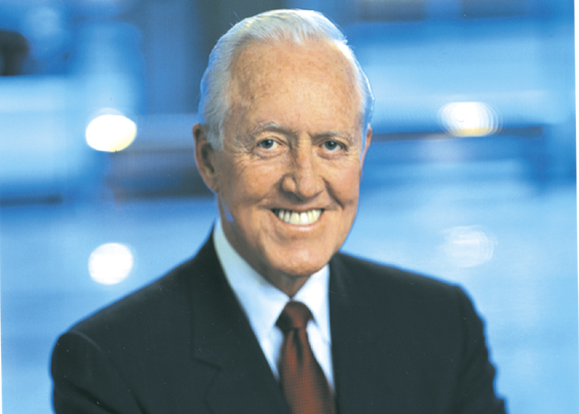
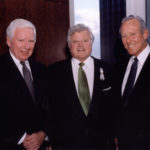
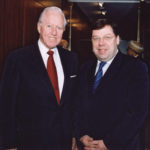
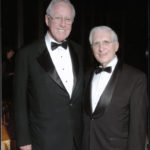
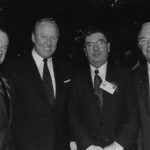
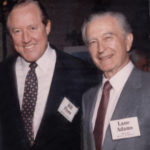
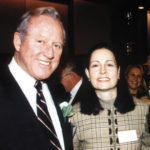
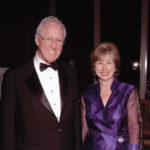
Leave a Reply